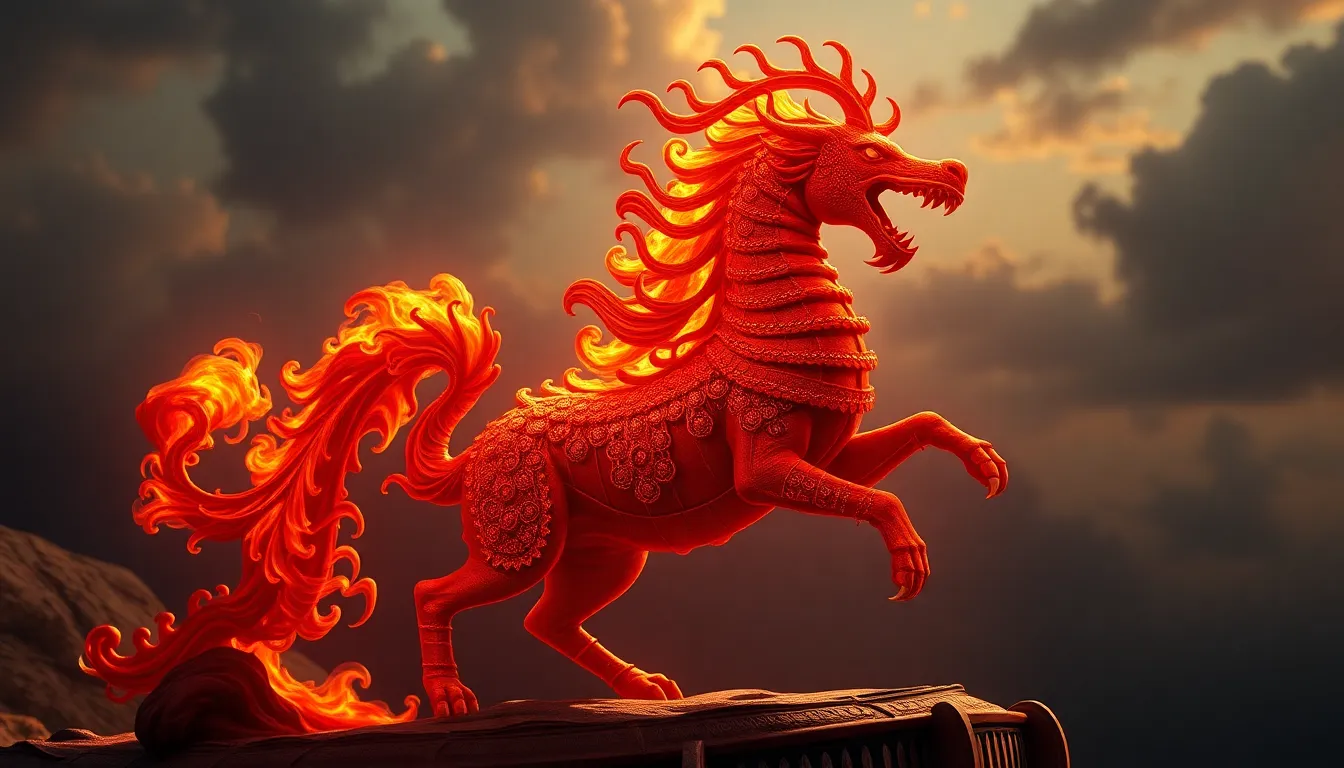The Chimera and Its Representation in Music and Performance
I. Introduction
The Chimera, a creature from Greek mythology, is often depicted as a fearsome beast that combines the features of a lion, a goat, and a serpent. This mythical creature has captivated the imagination of artists and performers throughout history, symbolizing chaos and the blending of opposites. Its significance extends beyond mythology, influencing various forms of art and cultural expressions.
This article aims to explore the representation of the Chimera in music and performance art, examining its historical context, musical interpretations, stage representations, and its role in popular culture.
II. Historical Context of the Chimera
The origins of the Chimera can be traced back to ancient Greek mythology, where it was described as a monstrous fire-breathing creature that terrorized the land of Lycia. The hero Bellerophon, with the aid of the winged horse Pegasus, ultimately defeated the Chimera, symbolizing the triumph of order over chaos.
Over time, the Chimera has evolved into a symbol of various themes such as duality, hybridity, and the struggle between opposing forces. Its imagery has influenced a plethora of art forms, including sculpture, painting, and literature. The Chimera’s complex nature has allowed it to be interpreted in numerous ways, adapting to the cultural and artistic movements of different eras.
III. The Chimera in Classical Music
Several notable compositions have drawn inspiration from the Chimera, reflecting its multifaceted nature and the thematic elements associated with it. Composers like Hector Berlioz and others have explored the creature’s symbolic resonance through their works.
Key thematic elements related to the Chimera in classical music include:
- Conflict and resolution
- Chaos versus order
- The juxtaposition of different musical styles and motifs
One significant case study is Berlioz’s “The Damnation of Faust,” where the Chimera serves as a representation of the inner turmoil and struggles faced by the protagonist. The music evokes a sense of dread and fascination, mirroring the creature’s terrifying yet alluring nature.
IV. The Chimera in Contemporary Music
In contemporary music, the Chimera continues to inspire artists across various genres, from rock to electronic music. Modern musicians often incorporate the creature’s symbolism into their lyrics and themes, exploring concepts such as identity, transformation, and societal chaos.
Some notable artists and bands that draw inspiration from the Chimera include:
- Metallica, with their exploration of inner demons and conflict
- Florence + The Machine, who often reference mythical creatures in their poetic lyrics
- Hozier, who uses mythological imagery to convey deeper emotional truths
The thematic interpretations in contemporary music often reflect a modern understanding of the Chimera as a metaphor for the complexities of human experience, resonating with audiences on multiple levels.
V. Performance Art and the Chimera
The Chimera has also found its place in performance art, where its rich symbolism can be expressed through various mediums. The creature’s role in theatrical performances often emphasizes themes of conflict and transformation, allowing actors to explore the duality inherent in the character.
Dance interpretations of the Chimera reflect its chaotic nature through dynamic movements and choreographic expressions that embody the creature’s ferocity and grace. Modern dance companies have created works that fuse classical and contemporary styles to depict the Chimera’s complexity.
Moreover, the integration of multimedia elements—such as projections, lighting, and sound design—in Chimera-themed performances enhances the audience’s experience, creating a visceral exploration of the creature’s mythology.
VI. The Chimera in Popular Culture
The Chimera has made its mark on popular culture, appearing in various forms of media including films, television shows, and video games. Its depictions often highlight the creature’s monstrous qualities while also exploring deeper themes of identity and transformation.
Notable examples include:
- Films like “Clash of the Titans,” which feature the Chimera as a formidable adversary.
- Video games such as “God of War,” where players encounter the Chimera in epic battles.
- Television series like “Hercules: The Legendary Journeys,” which portray the Chimera in adventurous narratives.
The crossover between music, performance, and visual storytelling has helped to maintain the Chimera’s relevance in contemporary culture, allowing audiences to engage with the myth in new and exciting ways.
VII. Symbolism and Themes Associated with the Chimera
The Chimera embodies several profound themes that resonate across different cultures and artistic expressions. One of the key explorations is the idea of duality and hybridity, represented by its composite nature. This duality can symbolize the conflict between rationality and irrationality, or the merging of different identities and experiences.
Additionally, the Chimera serves as a metaphor for the human experience, reflecting the complexity of emotions and the struggles inherent in existence. Various cultures interpret the Chimera differently, often viewing it as a guardian, a destroyer, or a symbol of the unknown.
VIII. Conclusion
In conclusion, the Chimera’s impact on music and performance art is profound and enduring. Its multifaceted symbolism continues to inspire artists, musicians, and performers, allowing for a rich exploration of themes relevant to the human experience.
The ongoing relevance of the Chimera in contemporary art speaks to the power of mythological creatures as vehicles for creative expression. As we continue to explore and reinterpret such figures, we affirm their significance in our cultural narratives and artistic endeavors.




